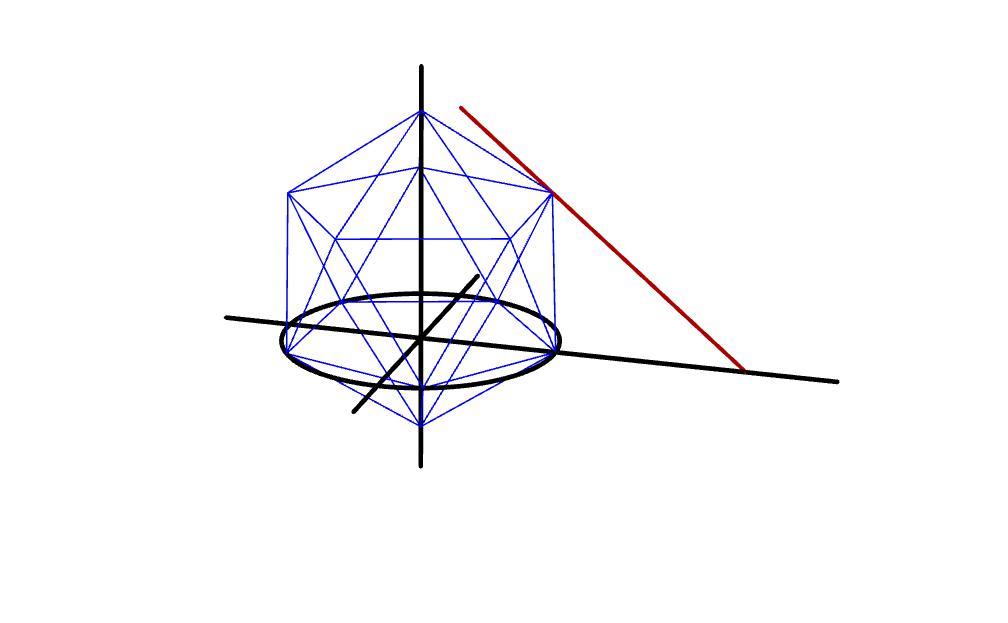Where Line Meets Regular Icosahedron
A circle of radius 2 on the -plane centered at has a regular pentagon inscribed inside it, not necessarily oriented as shown. This pentagon defines a regular icosahedron . From one of its vertices a line with a vector direction intersects the -axis at . The coordinates of this vertex is .

The sum can be expressed as
where are integers and is square-free. Find .
Note See also Regular Icosahedron for more details. Given a regular pentagon, it defines a regular icosahedron in that both the regular pentagon and the regular icosahedron share the same vertices. This would be possible with one unique regular icosahedron on either side of the plane of the regular pentagon.
The answer is 7.
This section requires Javascript.
You are seeing this because something didn't load right. We suggest you, (a) try
refreshing the page, (b) enabling javascript if it is disabled on your browser and,
finally, (c)
loading the
non-javascript version of this page
. We're sorry about the hassle.
From the point ( 3 + 3 , 0 , 0 ) , all points on the line with the vector direction of ( 3 , − 1 , − 2 ) can be expressed with the following parametric equations, with t as the parameter
x = 3 + 3 + 3 t
y = 0 − t
z = 0 − 2 t
The sum x + y + z is 3 + 3 , so the answer is 3 + 3 + 1 = 7 . All this talk about the icosahedron is just a diversion.
One can rotate the icosahedron as shown by 2 4 degrees counter-clockwise, then the vertex as shown will have the coordinates ( 3 , 1 , 2 ) , which has the sum 3 + 3 . Adding the vectors ( 3 , 1 , 2 ) and ( 3 , − 1 , − 2 ) will produce the point on the x -axis, ( 3 + 3 , 0 , 0 ) .
Courtesy Archit Agrawal for his solution in Where Line Meets Plane and author Stephen Chase and Brian Charlesworth for inspiration.